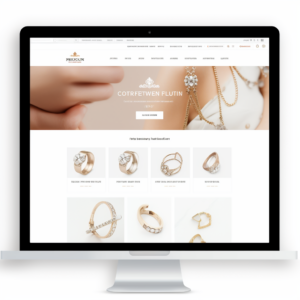Why should you use a blended inbound and outbound marketing strategy? For today’s small businesses, marketing is crucial for getting on the radar and driving growth. But with so many options out there, it can be overwhelming to know where to focus your efforts and budget.
The key is finding the right balance between inbound & outbound marketing strategies tailored to your brand and audience. In this post, we’ll break down the difference between these two approaches, their unique benefits, and how to combine them for marketing success.

Use Both Inbound and Outbound Marketing To Attract New People To Your Business
What is Inbound Marketing?
Inbound marketing centers around attracting customers by creating valuable content and experiences that pull people toward your brand. Instead of interrupting audiences with sales messages, you aim to connect with them by offering something helpful, entertaining or educational.
Some core inbound tactics include:
-
Blog Articles – Well-written blogs let you share your brand’s knowledge and perspective on topics your audience cares about. You can offer tips, behind-the-scenes insights, trend analysis, product highlights and more. Quality content can help you rank high in search engines so new audiences find you organically.
-
Social Media – Posting engaging social content like videos, images, and short-form text allows you to meet audiences where they already spend time online. Social media fosters community and lets you have genuine conversations to build relationships.
-
Email Newsletters – Send subscribers curated news, tips, exclusive offers and content they want in their inboxes. Email nurtures relationships and keeps you top of mind. Just avoid sounding salesy.
-
SEO – Optimizing your website and content for search engines helps you get found by people searching for your products or services. It expands your reach so ideal customers discover you at the right moments.
-
Webinars – Hosting free webinars or online events lets you share your expertise while educating your audience on topics that matter to them. It also gives a platform to highlight your products or services as helpful solutions.
Inbound marketing works by earning attention with value before ever making a sales pitch. Just like that popular influencer whose videos you love watching for the entertainment value even before they advertise anything. Inbound builds trust with your audience first. Need some ideas about create content for your inbound and outbound marketing, check out this post on how to create high quality engaging content.
Inbound Marketing Examples
For your inbound and outbound marketing strategy, let’s first focus on inbound marketing with a few real-world examples:
-
Blogging: According to HubSpot, marketers who prioritize blogging are 13x more likely to get a positive ROI. Blogs provide valuable information to potential customers and help establish the company as an authority in its field. They also improve SEO, driving more organic traffic to the website. (source)
-
Social Media Management Platform Sprout Social: This B2B marketer sells social media management software. Their customers use their platform to create and schedule tweets, Instagram posts, Facebook posts, and the like. They focus on demonstrating value and cultivating a brand that their prospects not only recognize but know they can turn to when they need answers. (source)
-
Dell: Dell has been using inbound marketing strategies for years to encourage customer participation and feedback for product development. (source)
-
Content Creation for LinkedIn: If you’re targeting B2B professionals who spend a lot of time on LinkedIn, it’s best to create content for LinkedIn. (source)
These examples show how inbound marketing strategies can be tailored to fit different business models and target audiences. The key is to provide value first and convert customers later. (source)
What is Outbound Marketing?
Now to complete your inbound and outbound marketing journey, lets focus on the outbound side. Outbound marketing is focused on pushing your message out proactively using interruptive methods with sales-focused messaging. Some classic examples include:
-
TV/Radio Ads – Like the commercials you can’t skip through while watching your shows. Their goal is briefly interrupting you to grab attention.
-
Cold Calling – This is when sales representatives call your personal number without prior consent to pitch you products and services. Often feels invasive.
-
Direct Mail – Sending unsolicited catalogs, flyers, postcards and sales letters to physical mailing lists. More targeted than random junk mail but still interruptive.
-
Pop-up/Banner Ads – On websites and apps, these are the ads and banners that pop up or slide in front of your screen as you’re browsing, aimed at grabbing your eye.
-
One-off Sales Emails – Sending promotional emails highlighting flash deals, discounts or offers without having ongoing subscriber consent. More spammy and disruptive.
Outbound puts your message and offers directly in front of people. The goal is interjecting your brand wherever possible to keep it top of mind until people need you. It’s an aggressive approach focused on sales over relationship-building.
Outbound Marketing Examples
Sure, here are a few real-world examples of outbound marketing strategies:
-
Television and Radio Advertisements: Broadcasting commercials to a wide audience through television and radio channels.
-
Direct Mail: This is a timeless outbound marketing technique. It allows you to reach out to potential customers directly, often with personalized messages.
-
Cold Calling: This involves reaching out to potential customers directly via phone calls. While this method can be intrusive, it can also be effective if done correctly.
-
Events and Tradeshows: These are places where businesses can showcase their products or services directly to potential customers.
-
Brand Sponsorships: This involves paying to have your brand associated with certain events, teams, or individuals.
-
Print Ads: These are advertisements that are printed in magazines, newspapers, billboards, etc.
Remember, the effectiveness of these two (inbound and outbound marketing) can vary greatly depending on the target audience and the nature of the product or service being marketed.
Why Small Businesses Need Both an Inbound and Outbound Marketing Strategy
For small business owners with limited time and resources, it may be tempting to focus on just one marketing channel, and leave out the other.
But in today’s digital ecosystem, a blended inbound and outbound marketing approach is most effective. Here’s why:
First, inbound marketing should form the foundation. Educational content and social engagement help you:
-
Organically attract your ideal audience
-
Build authority and trust
-
Generate leads and sales opportunities
Without inbound, you’re missing key strategies for sustaining awareness and consistently nurturing relationships with potential customers in your niche.
Outbound ads and promotions act as a valuable supplement. Used judiciously, they help you:
-
Get your offers and deals directly in front of relevant audiences
-
Bring in sales by motivating purchase actions
-
Rapidly promote new products, services and special offers
The key is balance
Too much outbound can feel intrusive and damage your brand identity. But avoiding outbound altogether means missing opportunities to convert warmed leads into actual sales.
By blending inbound relationship-building with targeted outbound promotion, small businesses can maximize reach, engagement, and conversions for marketing success, using limited resources when they harness the power of both inbound and outbound marketing strategies.
How Local Business’s Can Use Both Inbound and Outbound Marketing
Example 1: (local bakery)
Let’s take a small business such as a bakery. Here’s how it can effectively use both inbound and outbound marketing strategies to draw in more customers.

Inbound Marketing: The bakery maintains an active blog on its website where it shares recipes, baking tips, and behind-the-scenes stories. It also has a strong social media presence, regularly posting photos of its baked goods and interacting with customers. Additionally, it offers a free weekly newsletter featuring exclusive recipes and discounts. These strategies attract potential customers to the bakery’s website and social media pages, building a community around its brand.
Outbound Marketing: The bakery also uses traditional advertising methods to reach potential customers. It runs ads in local newspapers and on local radio stations, sponsors local events, and sends out direct mail flyers with coupons. These strategies proactively reach out to potential customers, raising awareness of the bakery and its offerings.
Example 2: (ecommerce jewelry store)
Another example of an online small business that uses both inbound and outbound marketing strategies is an e-commerce store selling handmade jewelry.

Inbound Marketing: The store maintains a blog where it shares jewelry-making tutorials, fashion tips, and stories about how each piece is made. It also has a strong social media presence on platforms like Instagram and Pinterest, where it shares beautiful photos of its products and interacts with followers. Additionally, it offers a monthly newsletter featuring new product announcements and exclusive discounts. These strategies attract potential customers to the store’s website and social media pages, building a community around its brand.
Outbound Marketing: The store also uses paid advertising to reach potential customers. It runs targeted ads on social media platforms, promoting its products to users who have shown an interest in handmade jewelry or fashion. It also sends out promotional emails to its newsletter subscribers, featuring new products and sales. These strategies proactively reach out to potential customers, raising awareness of the store and its offerings.
By using both inbound and outbound marketing strategies, these small business are able to reach a wide range of potential customers and build a strong brand presence in their community.
Crafting Your Inbound and Outbound Marketing Strategy Combo
When combining inbound and outbound marketing strategies, focus on:
-
Building a strong inbound foundation through content, social media, email subscribers, SEO, etc. This pulls in and engages potential new customers.
-
Layering in outbound tactics like paid ads, direct mail, and sales-focused email campaigns. Use promotional messaging to motivate purchases from warmed inbound leads.
-
Finding the perfect mix based on your business model, audience preferences, and marketing budget. Test different inbound vs. outbound spending allocations to see what moves the revenue needle.
With the right balanced blend of inbound relationship-building and outbound lead-converting strategies tailored to your brand, even small businesses can cut through the noise in saturated markets and achieve digital marketing success.
Conclusion
Savvy small business owners don’t choose between inbound and outbound marketing. They leverage the unique strengths of both in a cohesive mix that attracts, engages and persuades audiences across their entire customer journey. With some trial and error to find that “marketing sweet spot”, you can craft a winning strategy with measurable impact.
